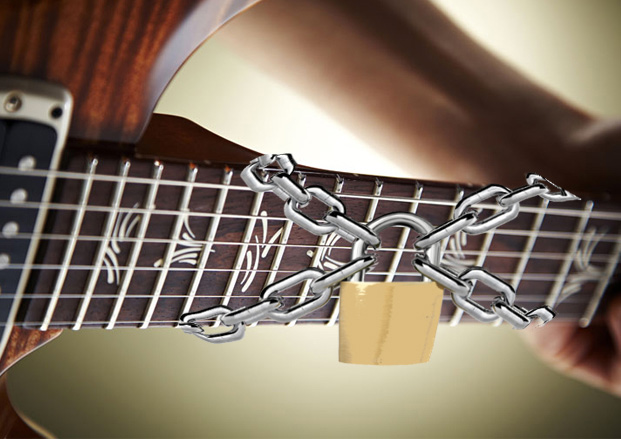How to Break the Chains of Scale Boxes

One of the most difficult challenges guitarists will experience in their quest to find their voice on the axe is the art of improvising. It’s pretty easy to hear the difference between a player who has a strong understanding of improvisation and one who is simply playing linear, scalar runs up and down the neck.
This is not to say learning scale positions and modes is a bad thing—I’m simply pointing out that once you do possess that knowledge, it’s very easy to get stuck in a given scale’s various boxes. So how do you escape?
The path to break free is actually already at your fingertips, and all you have to do is connect the dots. I came up with a concept I call “Home Riffs” (maybe the concept isn’t mine, but the phrase is definitely mine!), and these are essentially little three- to seven-note patterns that you’re extremely comfortable with. In the video lesson below, you’ll understand just how simple Home Riffs can be. The key to unlocking the fretboard lies in understanding where a given Home Riff exists all over the neck, in any octave.
By establishing these anchor points, you provide yourself with a metaphorical security net as you walk the tightrope of musical improvisation. Unless you’re Guthrie Govan or some other mystical guitar wizard, chances are you’re going to get lost in your melodic thoughts quite frequently, especially when you’re first beginning to practice improvising. When you notice yourself start to waiver, you should be searching for a Home Riff to finish your statement, no matter where you are on the guitar neck.
Discovering a few different Home Riffs or home bases of notes in a given scale will dramatically imrprove your playing, because you’ll be able to move through a scale’s various positions in a cohesive manner. The best part is, when you do land on a Home Riff, you still have access to the rest of the positional notes in the scale. The Home Riff just allows you to take a breather, collect your thoughts and move along to the next idea. As guitar players, we all struggle with playing too many notes most of the time, so Home Riffs also can be a perfect place to pause and even develop a motif.
Escaping scale boxes is essentially mapping out the fretboard using anchor points. This way of thinking will guide you through the myriad of melodic possibilities as you look to make the leap from playing sequential, scale-type licks to playing with more feeling and musicality.
Tyler Larson is the founder of the guitar-centric brand Music is Win. His insightful, uncomplicated guitar lessons and gear demonstrations along with entertaining, satirical content about life as a musician receive tens of millions of video views per month across social media. Tyler is also the creator of the extremely popular online guitar learning platform, Guitar Super System. A graduate of Berklee College of Music, Tyler has been teaching guitar for over a decade and operates a production studio in Nashville, TN.
All the latest guitar news, interviews, lessons, reviews, deals and more, direct to your inbox!
Tyler Larson is the founder of the guitar-centric brand Music is Win. His insightful, uncomplicated guitar lessons and gear demonstrations along with entertaining, satirical content about life as a musician receive tens of millions of video views per month across social media. Tyler is also the creator of the extremely popular online guitar learning platform, Guitar Super System. A graduate of Berklee College of Music, Tyler has been teaching guitar for over a decade and operates a production studio in Nashville, TN.
